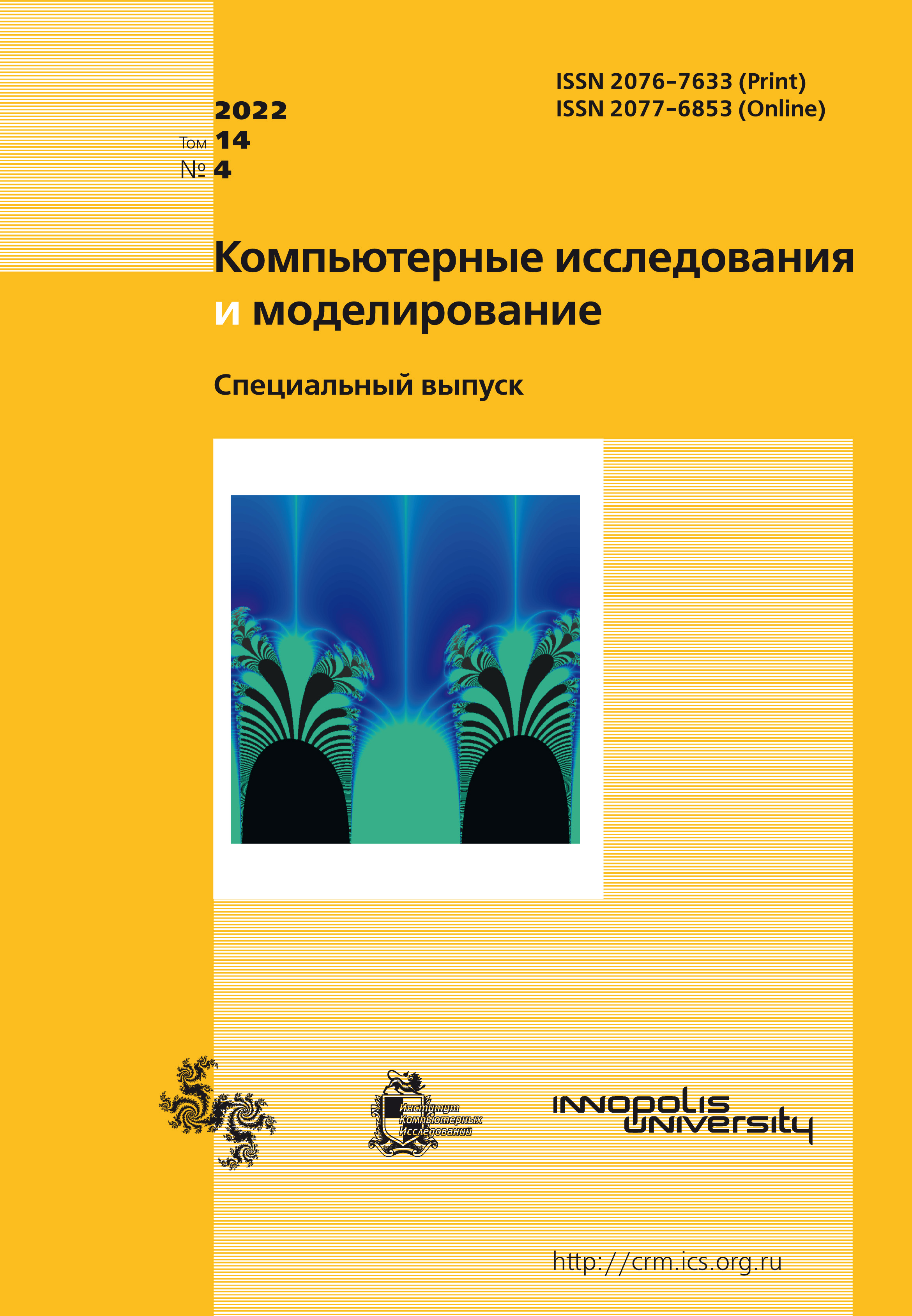All issues
- 2024 Vol. 16
- Issue 1 (special issue)
- 2023 Vol. 15
- 2022 Vol. 14
- 2021 Vol. 13
- 2020 Vol. 12
- 2019 Vol. 11
- 2018 Vol. 10
- 2017 Vol. 9
- 2016 Vol. 8
- 2015 Vol. 7
- 2014 Vol. 6
- 2013 Vol. 5
- 2012 Vol. 4
- 2011 Vol. 3
- 2010 Vol. 2
- 2009 Vol. 1
Numerical modeling of physical processes leading to the destruction of meteoroids in the Earth’s atmosphere
 pdf (272K)
pdf (272K)
Within the framework of the actual problem of comet-asteroid danger, the physical processes causing the destruction and fragmentation of meteor bodies in the Earth’s atmosphere are numerically investigated. Based on the developed physicalmathematical models that determines the movements of space objects of natural origin in the atmosphere and their interaction with it, the fall of three, one of the largest and by some parameters unusual bolides in the history of meteoritics, are considered: Tunguska, Vitim and Chelyabinsk. Their singularity lies in the absence of any material meteorite remains and craters in the area of the alleged crash site for the first two bodies and the non-detection, as it is assumed, of the main mother body for the third body (due to the too small amount of mass of the fallen fragments compared to the estimated mass). The effect of aerodynamic loads and heat flows on these bodies are studied, which leads to intensive surface mass loss and possible mechanical destruction. The velocities of the studied celestial bodies and the change in their masses are determined from the modernized system of equations of the theory of meteoric physics. An important factor that is taken into account here is the variability of the meteorite mass entrainment parameter under the action of heat fluxes (radiation and convective) along the flight path. The process of fragmentation of meteoroids in this paper is considered within the framework of a progressive crushing model based on the statistical theory of strength, taking into account the influence of the scale factor on the ultimate strength of objects. The phenomena and effects arising at various kinematic and physical parameters of each of these bodies are revealed. In particular, the change in the ballistics of their flight in the denser layers of the atmosphere, consisting in the transition from the fall mode to the ascent mode. At the same time, the following scenarios of the event can be realized: 1) the return of the body back to outer space at its residual velocity greater than the second cosmic one; 2) the transition of the body to the orbit of the Earth satellite at a residual velocity greater than the first cosmic one; 3) at lower values of the residual velocity of the body, its return after some time to the fall mode and falling out at a considerable distance from the intended crash site. It is the implementation of one of these three scenarios of the event that explains, for example, the absence of material traces, including craters, in the case of the Tunguska bolide in the vicinity of the forest collapse. Assumptions about the possibility of such scenarios have been made earlier by other authors, and in this paper their implementation is confirmed by the results of numerical calculations.
Indexed in Scopus
Full-text version of the journal is also available on the web site of the scientific electronic library eLIBRARY.RU
The journal is included in the Russian Science Citation Index
The journal is included in the RSCI
International Interdisciplinary Conference "Mathematics. Computing. Education"






